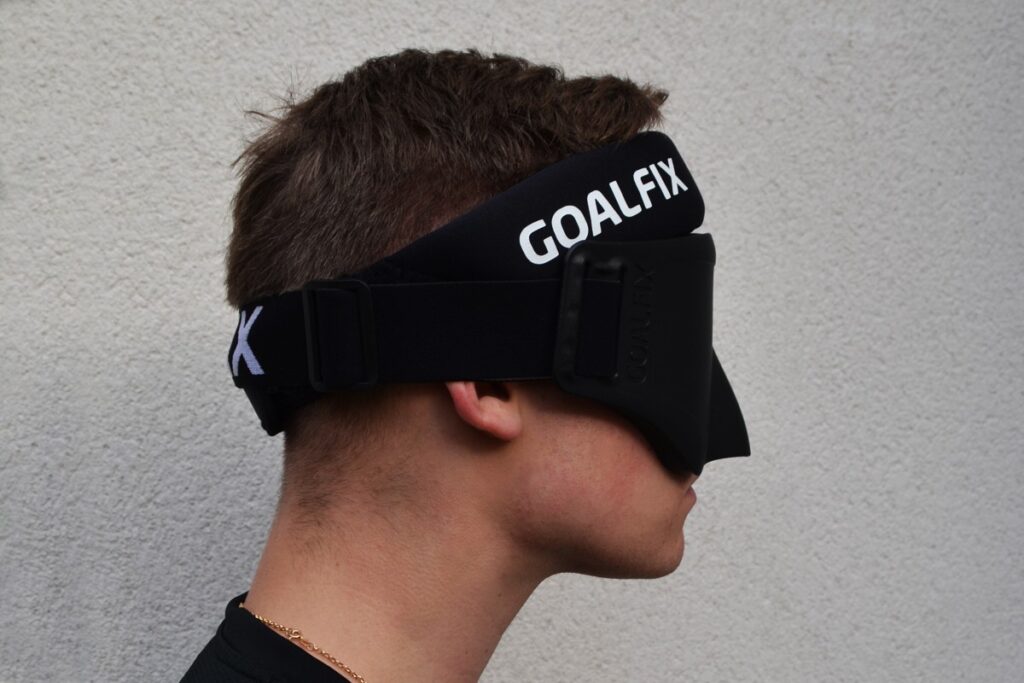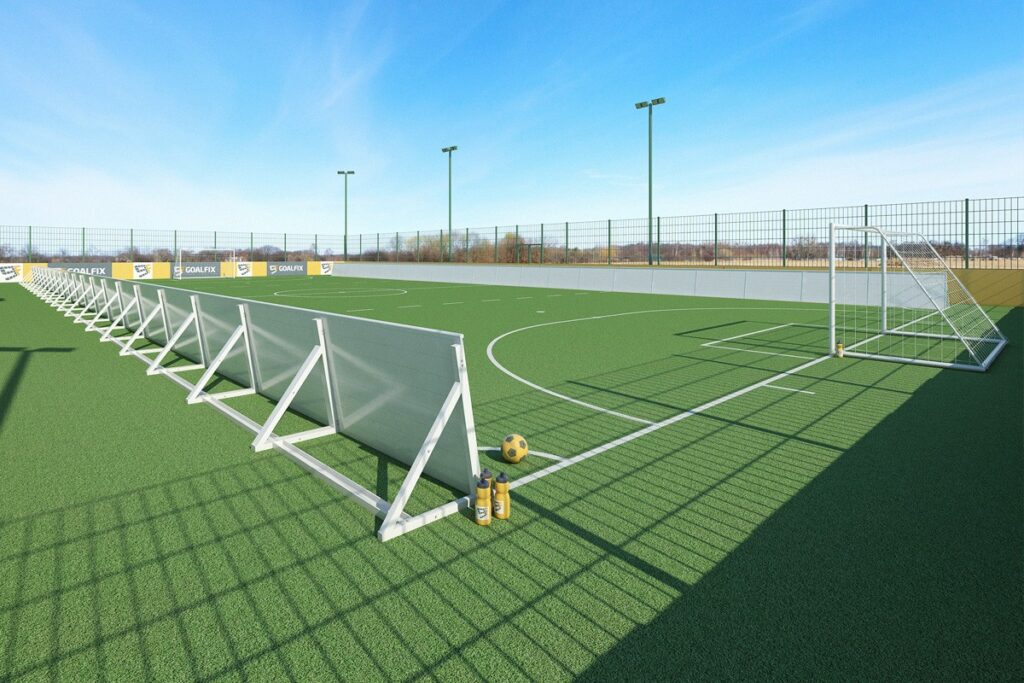Blind football, often referred to as
“futsal for the visually impaired”
It is a captivating and dynamic sport that challenges perceptions and showcases the immense skill, teamwork, and athleticism of its players. Played on a compact pitch with specific adaptations to ensure player safety and orientation, blind football has become a celebrated Paralympic discipline. What truly sets this sport apart is the reliance on auditory cues and spatial awareness, making it an ideal candidate for the integration of assistive technology (AT) to aid players’ performance and enhance their training regimes.
The Dynamics of Blind Football
Contrary to common misconceptions, blind football is a fast-paced, technical, and physical sport that has garnered significant attention and appreciation. Played on a 40m x 20m pitch, blind football maintains certain adaptations to cater to visually impaired players. The pitch is enclosed with “kickboards” to define the boundaries, and the game is played with a ball fitted with bells, ensuring that its movement can be tracked by players through sound.
Each team consists of five players, including a goalkeeper, who can be partially sighted and classified under the B2 and B3 categories. The outfield players are required to wear eye patches and eyeshades, eliminating any potential advantage for those with residual vision. The absence of offside rules and throw-ins, coupled with the presence of corner kicks, contributes to a dynamic and fluid gameplay experience.
Assistive Gear in Blind Football
In blind football, safety and precision go hand in hand. Players wear shin guards for protection, while headgear is strongly recommended for outfield players to minimize injury risks. The Goalfix Halo360 Head Guard offers a versatile solution, designed to be used independently or combined with eyeshades.

The ball dimensions range from 60 cm to 62 cm in circumference, weighing 510g to 540g. A standout choice is the IBSA approved Stryker ball, by Goalfix. Equipped with strategically placed sound devices, it ensures a consistent sound and balanced roll, enhancing gameplay.

Boundaries are defined by tactile and secure rebound panels that encircle the playing area. Goalfix’s rebound panels, measuring 2 meters in length and 1 meter in height, are set at a 10˚ angle for safety and immersion.

Goals in blind football stand at 3.66 meters wide and 2.14 meters high, with posts and crossbars spanning 8cm. Goalfix’s freestanding portable goal solution with rounded posts further enhances the game’s accessibility and versatility.
Elevating Blind Football Through the Power of (Assistive) Technology
Although blind football thrives on auditory cues, the integration of AT holds transformative potential, offering a dynamic edge to players’ skills and strategies. In an era of technological advancement, the incorporation of AT can redefine player training and enrich gameplay experiences, fostering a realm of inclusivity and reward for all involved.
Revolutionizing Training with Innovative Tools
AT introduces a new dimension to training through simulation tools, effectively replicating real-game scenarios. Consider immersive virtual reality experiences that enable players to anticipate teammate and opponent movements, spatial audio cues that enhance pitch navigation, and haptic feedback devices that bring a tactile aspect to the training. Such tools empower players to refine their positioning, adapt their tactics, and elevate their performance levels.
Sensory Feedback for Unparalleled Precision
Wearable devices equipped with cutting-edge sensor technology can be game-changers. Imagine players wearing a sensory feedback device emitting vibrations that signal ball proximity. Furthermore, auditory cues from the ball itself, like those featured in the Goalfix Stryker ball, could revolutionize how players perceive and react to the game’s dynamics. This seamless integration of tech elevates spatial awareness, enhances timing, and sharpens decision-making, all in real-time on the field.
Uniting Through Advanced Communication Systems
AT not only enhances individual performance but also encourages team synergy. The incorporation of wireless communication devices can bridge gaps in teamwork. Sharing positional information, planned movements, and strategic insights among players creates a sense of unity and collaboration, significantly enhancing on-field coordination.
Data-Driven Insights for Tactical Excellence
AT’s data analytics capabilities, exemplified by a sports analytics platform, can revolutionize performance assessment. By collecting and analyzing player movements, ball trajectories, and game statistics, coaches and players can collaborate to identify areas for improvement. This data-driven approach empowers players to refine tactics, optimize strategies, and make informed decisions for tactical supremacy.
Pioneering Game Evolution Through Innovative Adaptations
The inclusion of AT opens avenues for inventive game adaptations. Think of “smart balls,” outfitted with advanced tracking mechanisms. These balls emit distinct sounds or signals based on their movement, offering an immersive experience for players and spectators alike. This leap into innovative adaptations amplifies the already captivating blind football gameplay, merging tradition with modernity.
While blind football has yet to fully embrace the tech potential, it stands at a crucial juncture. The time is ripe to infuse this captivating sport with the possibilities of assistive technology. As we stride into a future enriched by innovation, embracing AT is not only an opportunity but a necessity, to propel blind football into new dimensions of skill, strategy, and inclusivity.



